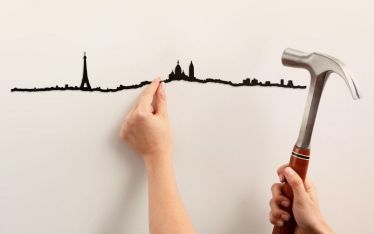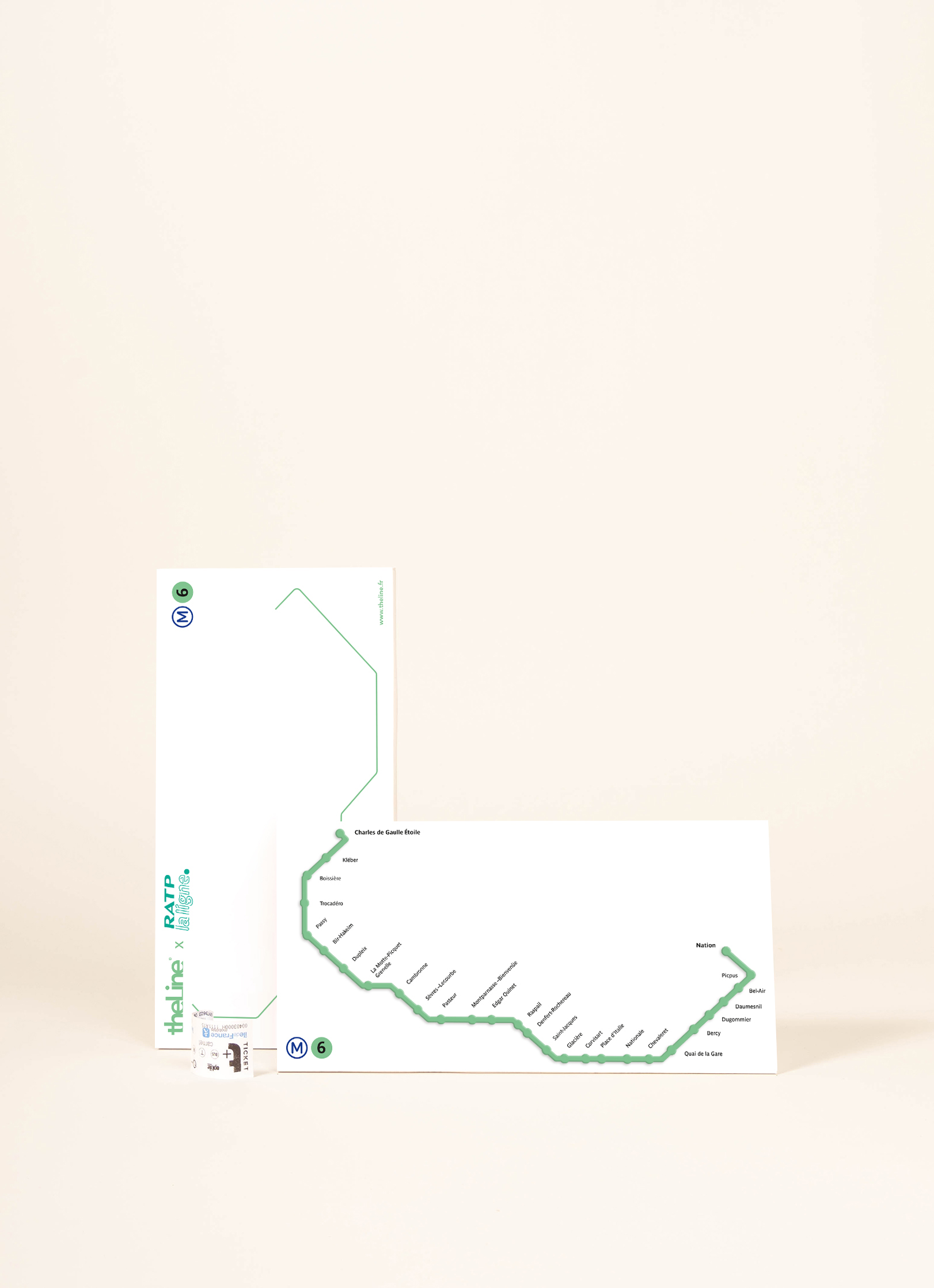Line 6
The Line x RATP la ligne
We have depicted the route of line 6 of the Paris subway and its 28 stations.
With this new format, it is possible to stick, magnetize and even place the line anywhere thanks to its cardboard support on which the names of the stations appear.
The Line x RATP is made in France.
Find out more about Line 6Any order placed before 11:30am (UTC+1) is shipped the same day (except weekends).
Delivery in France in 2-5 working days.
Shipping costs offered in relay points in France.
Indications

-
1.5 mm thick steel line
-
To be wall fixed with 3 nails
-
Inside and outside
-
Super easy
-
Start by nailing the middle of the line, then simply adjust the level
-
Not suitable for brick or concrete walls
About Line 6
Line 6 was put into service in 1909 between Place d'Italie and Nation stations, and in 1942 it took over the former route of line 5 as far as Étoile. It then adopted its semicircular shape, essentially serving the left bank by following the line of the Fermiers Généraux wall demolished in 1860. Half of its route is overhead, as the line crosses many of the capital's hills, and it is deemed simpler to maintain the straightest trajectory to avoid steep ramps. The overhead stations of line 6 have coloured brick platform walls with geometric decorations on the outside and a single glass roof protects most of the stations. In 1974, Line 6 was the last historic line to be equipped with a rubber-tyred metro.




